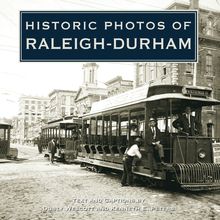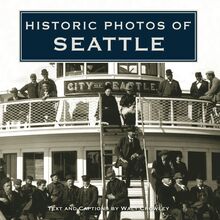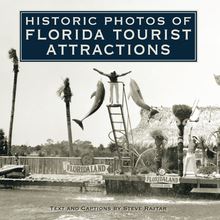Historic Photos of New Jersey , livre ebook
194
pages
English
Ebooks
2010
Vous pourrez modifier la taille du texte de cet ouvrage
Obtenez un accès à la bibliothèque pour le consulter en ligne En savoir plus
Découvre YouScribe en t'inscrivant gratuitement
Découvre YouScribe en t'inscrivant gratuitement
194
pages
English
Ebooks
2010
Vous pourrez modifier la taille du texte de cet ouvrage
Obtenez un accès à la bibliothèque pour le consulter en ligne En savoir plus
Publié par
Date de parution
28 avril 2010
Nombre de lectures
1
EAN13
9781618584120
Langue
English
Poids de l'ouvrage
6 Mo
One of the thirteen original colonies, the state of New Jersey is a study in contrasts. It is both the Garden State, home to the Rutgers tomato, but also the birthplace of the nation’s first industrial complex, Alexander Hamilton’s Society for Establishing Useful Manufactures.
The onetime industrial behemoths, from Paterson in the north to Camden in the south, give way to legendary resort towns along the coast like Ocean City and Cape May. Baby Parades that began at Asbury Park still delight New Jerseyans, where once the Lindbergh kidnapping at Hopewell engendered grief. In 1877, Menlo Park became the birthplace of Edison’s phonograph, and in 1938 Orson Welles would use a radio broadcast to bring an imaginary invasion of Martians to Grover’s Mill. The Miss America Pageant grew famous in Atlantic City, just as the Hindenburg airship disaster at Lakehurst remains etched in the historical memory of Americans everywhere.
Historic Photos of New Jersey is a kaleidoscopic tour of this colorful state, from the early days of photography in the 1860s to the recent past in the 1970s. Nearly 200 photographs reproduced in vivid black-and-white, with informative captions and introductions, tell the story.
Publié par
Date de parution
28 avril 2010
Nombre de lectures
1
EAN13
9781618584120
Langue
English
Poids de l'ouvrage
6 Mo
HISTORIC PHOTOS OF
NEW JERSEY
T EXT AND C APTIONS BY R USSELL R OBERTS
Inspired by the Great Awakening, the College of New Jersey was originally established in Elizabeth in 1746. It moved to the small town of Princeton in 1756, and officially changed its name to Princeton University in 1896 in honor of the town. When it was built in 1754, the college s Nassau Hall was the largest public building in the American colonies.
HISTORIC PHOTOS OF
NEW JERSEY
Turner Publishing Company
200 4th Avenue North Suite 950
Nashville, Tennessee 37219
(615) 255-2665
www.turnerpublishing.com
Historic Photos of New Jersey
Copyright 2010 Turner Publishing Company
All rights reserved.
This book or any part thereof may not be reproduced or transmitted in any form or by any means, electronic or mechanical, including photocopying, recording, or by any information storage and retrieval system, without permission in writing from the publisher.
Library of Congress Control Number: 2009933011
ISBN: 978-1-59652-561-0
Printed in China
10 11 12 13 14 15 16 17-0 9 8 7 6 5 4 3 2 1
C ONTENTS
A CKNOWLEDGMENTS
I NTRODUCTION
T HE M ODERN S TATE E MERGES (1865-1899)
A S TATE I NVINCIBLE (1900-1919)
O N A S EA OF U NCERTAINTY (1920-1939)
T HE O LD O RDER C RUMBLES (1940-1970 S )
N OTES ON THE P HOTOGRAPHS
Seeking to unload some undesirable beachfront real estate lots (at high tide they were unreachable) in South Atlantic City in 1881, James Lafferty, Jr., hit upon the idea of constructing a six-story wooden elephant as a way of attracting visitors to the area. The elephant certainly did attract people, who came solely to see it and had no interest in seaside real estate. Overextended, Lafferty was forced to sell the elephant in 1887.
A CKNOWLEDGMENTS
This volume, Historic Photos of New Jersey , is the result of the cooperation and efforts of many individuals and organizations. It is with great thanks that we acknowledge the valuable contribution of the following for their generous support:
Library of Congress
New Jersey State Archives; Department of State
The writer would also like to thank Pat King-Roberts for valuable contributions and assistance in making this work possible:
-------
With the exception of touching up imperfections that have accrued with the passage of time and cropping where necessary, no changes have been made. The focus and clarity of many images is limited by the technology and the ability of the photographer at the time they were taken.
The quotation on p. 111 is from Leonard C. Bruno, The Tradition of Technology: Landmarks of Western Technology in the Collections of the Library of Congress (Library of Congress, 1997).
I NTRODUCTION
New Jersey has always been a state with two very different and distinct personalities. Considering how it developed, perhaps that is highly understandable. In the state s early colonial history, a large part of the state was sold in 1674 to the Quakers, after a bout with the usual unpleasantnesses between the English and Dutch that characterized the region. This created the unusual situation of two states within a state-East Jersey and West Jersey. They were both New Jersey yet they weren t. New Jersey remained schizophrenic until 1702, when the two Jerseys were finally joined back together as one. However, it would not be the last time loyalties were divided.
The American Revolution produced the next big litmus test. Like the other colonies involved in the fight, New Jersey had some citizens who wanted to stay close to Mother England and others who wanted to cut the apron strings completely and go it alone. But New Jersey added an extra pinch of spice to the mixture when its royal governor, William Franklin, decided to favor the Tories. Perhaps not unusual in and of itself, but Franklin was the son of Benjamin Franklin-one of the most ardent of Patriots.
The next test of New Jersey s loyalties soon followed. In 1776, the state s first constitution granted the right to vote to both widows and non-whites, thus creating a serious chasm between its liberality and the severe restrictions of its sister colonies on voting privileges. The state fell into line in 1807, by restricting the vote to white males only. But New Jersey had allowed its divided self to peek out from behind the curtain once again.
Early in the nineteenth century came another test. Farms covered the state, so much so that one day New Jersey would become known as the Garden State. One of the Founding Fathers had other ideas. Alexander Hamilton, enthralled with the power and majesty of Passaic Falls, decided to base his manufacturing initiative for the new nation at the falls, using the water as a source of power. And so this most agricultural of states found itself the industrial nerve center of the United States. Two different and distinct personalities-it was becoming a theme.
Even the state s Atlantic coastal region developed in two distinct manners. In the north, Long Branch owed its development largely to people from New York, while Cape May in the south leaned heavily toward Philadelphia and points south. The Shore would continue to develop along those lines over the years.
At the time of the bloody Civil War, the first decade captured in the photographs in this book, New Jersey once again showed that it was of two minds. The state firmly supported the Union-except that it cast its ballots against Abraham Lincoln, who strongly favored preserving the Union, in 1860. Four years later New Jersey voted against reelecting Lincoln, thus becoming the only free state to reject Lincoln twice.
Two separate and distinct personalities. Loyalties torn and divided between a great city to its north and a great city to its south. Trouble enough to drive any state kicking and screaming into the deep dark night. Fortunately, the people of New Jersey-strong, independent, proud-have always known who they were and what they were about. It is these people and their accomplishments that the images in this book celebrate.
- Russell Roberts
Realizing that he was gravely ill, Walt Whitman chose this site for his tomb in Camden s Harleigh Cemetery on Christmas Day, 1890. In a race against time, Whitman more than once journeyed to the site from his Mickle Street home to check on the progress of his tomb builders. Occasionally he read the workmen scraps of his poetry. The tomb was completed just before Whitman s death on March 26, 1892.
T HE M ODERN S TATE E MERGES
(1865-1899)
At long last, the devastating Civil War was over. More than 76,000 New Jersey citizens went marching off to that war, and a number exceeding 5,700 did not return. Those who did, however, found a state much different from the one they had departed. The New Jersey the troops had left was almost completely agricultural. Farming dominated the state from one end to the other, and working the soil was the preeminent occupation. Only in Newark, Jersey City, and Paterson did manufacturing prevail.
With the need for war materiels that could be manufactured in the state, the conflict jump-started New Jersey s industrial heart, and it kept beating at a furious pace after the war was over. The railroads grew frantically-tracks linking the various regions of the state jumped from 1,125 miles in 1870 to 1,684 miles in 1880-and with that growth the railroads transformed the state. The population exploded in the north, in areas like Hudson County, where the population soared from 9,000 in 1840 to 386,000 by 1900 as workers queued into the cities in search of jobs. Trenton, formerly a sleepy state capital on the Delaware River, jumped from 6,000 residents in 1850 to more than 57,000 in 1890 as industries like rubber and ceramics poured into the city and plants like the Roebling wire rope company shifted into high gear.
Every part of the state shared in this surging growth. The glass industry flocked to Millville in the south. Camden grew at a skyrocketing pace. The Atlantic coast, primarily a howling wilderness with the exception of Long Branch in the north and Cape May in the south, became dotted with resorts, including one called Atlantic City that soon everyone knew about.
There was still agriculture. Ten minutes from any large urban area, rolling farmlands could easily be found. The Garden State was still the Garden State. But increasingly now, it was the urban and developed state as well. As the nineteenth century came to a close, New Jersey was emerging in its modern and familiar form.
Alexander Hamilton first saw the Passaic Falls during the American Revolution when he stopped near them for lunch. The power of the thundering water made such an impression that later, as Treasury Secretary, he chose the site as the home of America s first industrial complex-the Society for Establishing Useful Manufactures. Shown here in 1869, the falls would power S.U.M. cotton mills, the manufacture of steel and railroad locomotives, the silk industry, the manufacture of early aircraft engines, and other products of American industry. The S.U.M. would also give rise to the city of Paterson.
The 10-ton locomotive John Bull was built in 1831 in England for the Camden Amboy Railroad and shipped to Bordentown in crates without directions for reassembly. There it was put together by 23-year-old Isaac Dripps, who used a whiskey barrel on a flatcar for the water supply and a leather hose made by a local shoemaker to bring the water to the boilers.
Both Thomas Edison and the tiny village of Menlo Park were unknown when he relocated there in 1876. But over the next six years, in a burst of creativity the likes of which the world had rarely seen before, he and his dedicated team produced approximately 400 inventions for patent, earning him recognition as the Wizard of Menlo Park. Among those inventions was the phonograph.
Shortly after he moved to Menlo Park, Thomas Edison invented the phonograph. Not merely a playback device, the phonograph contained two n














